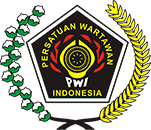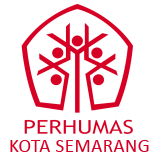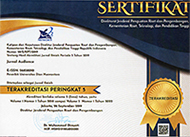KOMISI PEMBERANTASAN KORUPSI DALAM KONSTRUKSI MEDIA ONLINE (ANALISIS WACANA KRITIS BERITA PUTUSAN SIDANG PRAPERADILAN PERTAMA SETYA NOVANTO DI TRIBUNNEWS.COM PERIODE 30 SEPTEMBER 2017)
DOI:
https://doi.org/10.33633/ja.v1i2.2686Abstract
AbstrakKomisi Pemberantasan Korupsi (KPK) merupakan lembaga negara yang bersifat independenyang melaksanakan tugas dan wewenangnya bebas dari kekuasaan manapun. Penelitian inibertujuan pertama, membongkar konstruksi wacana KPK dalam berita pasca sidang putusanpraperadilan pertama Setnov periode 30 September 2017 di Tribunnews.com, dan kedua,mengkaji faktor-faktor dibalik konstruksi Tribunnews.com tentang wacana KPK. Metode penelitian yang digunakan adalah Analisis Wacana Kritis Norman Fairclough. Adapun metode yang digunakan untuk tingkat pertama adalah metode framing. Tingkat kedua adalahpemahaman teks dan konteks. Ada lima langkah yang dijadikan acuan. Pertama, fokus kepadaketidakberesan sosial dalam aspek semiotikanya. Kedua, mengidentifikasi hambatan-hambatanuntuk menangani aspek ketidakberesan sosial tersebut. Ketiga, mempertimbangkan apakahtatanan sosial membutuhkan ketidakberesan sosial itu. Keempat, mengidentifikasi cara-carayang mungkin untuk mengatasi hambatan tersebut. Kelima, melakukan refleksi secara kritis darikeempat poin tersebut. Hasil penelitian menunjukkan bahwa Tribunnews.com meletakkan KPKsebagai pihak yang salah. Setnov yang benar. KPK dikonstruksikan tidak memiliki kompetensi untuk menangani kasus Setnov. Tribunnews.com mengarahkan pandangan khalayak untukmenyudutkan KPK. Pihak Tribunnews.com melawan arus suara publik dalam pemberitaannyatentang KPK adalah sebagai strategi bisnis. Positioning Tribunnews.com ini dilakukan karenanyaris semua media online berada untuk membela KPK. Dari sudut pandang bisnis media halini tidak menguntungkan untuk mencari iklan.Kata Kunci : Konstruksi, Wacana Kritis, Berita Sidang, Komisi Pemberantasan KorupsiAbstractThe Corruption Eradication Commission is a state institution that is independent and incarrying out its duties and authority free from any power. This study aims at first, dismantlingthe construction of KPK discourse in the post-trial news of the first pre-trial ruling of Setnov forSeptember 30, 2017 at Tribunnews.com, and secondly reviewing the factors behind Tribunnews.com construction of the KPK discourse. The research method used is Critical Discourse Analysisof Norman Fairclough. The method used for the first level is the framing method. The secondlevel is the understanding of text and context. There are five steps that are used as a reference.First, focus on social irregularities in its semiotic aspects. Second, identify barriers to address the social irregularities. Third, consider whether social order requires social irregularity. Fourth, identify possible ways to overcome these obstacles. Fifth, reflect critically from those four points.The results showed that Tribunnews.com put the KPK as the wrong party. Means that Setnov is the right one. KPK was constructed with no competence to handle Setnov’s case. Tribunnews.com directs the public view to cornering the KPK. Tribunnews.com parties against the currenpublic voice in its coverage of the KPK is a business strategy. Positioning Tribunnews.com isdone because almost all online media are to defend the Commission. From a media businesspoint of view it is not profitable to find ads.Keywords: Construction, Critical Discourse, News Session, Corruption EradicationCommissionDownloads
Published
2019-07-23
Issue
Section
Articles
License
Authors who publish with this journal agree to the following terms:
- Authors retain copyright and grant the journal right of first publication with the work simultaneously licensed under a Creative Commons Attribution License that allows others to share the work with an acknowledgment of the work's authorship and initial publication in this journal.
- Authors are able to enter into separate, additional contractual arrangements for the non-exclusive distribution of the journal's published version of the work (e.g., post it to an institutional repository or publish it in a book), with an acknowledgment of its initial publication in this journal.
- Authors are permitted and encouraged to post their work online (e.g., in institutional repositories or on their website) prior to and during the submission process, as it can lead to productive exchanges, as well as earlier and greater citation of published work (See The Effect of Open Access).





















